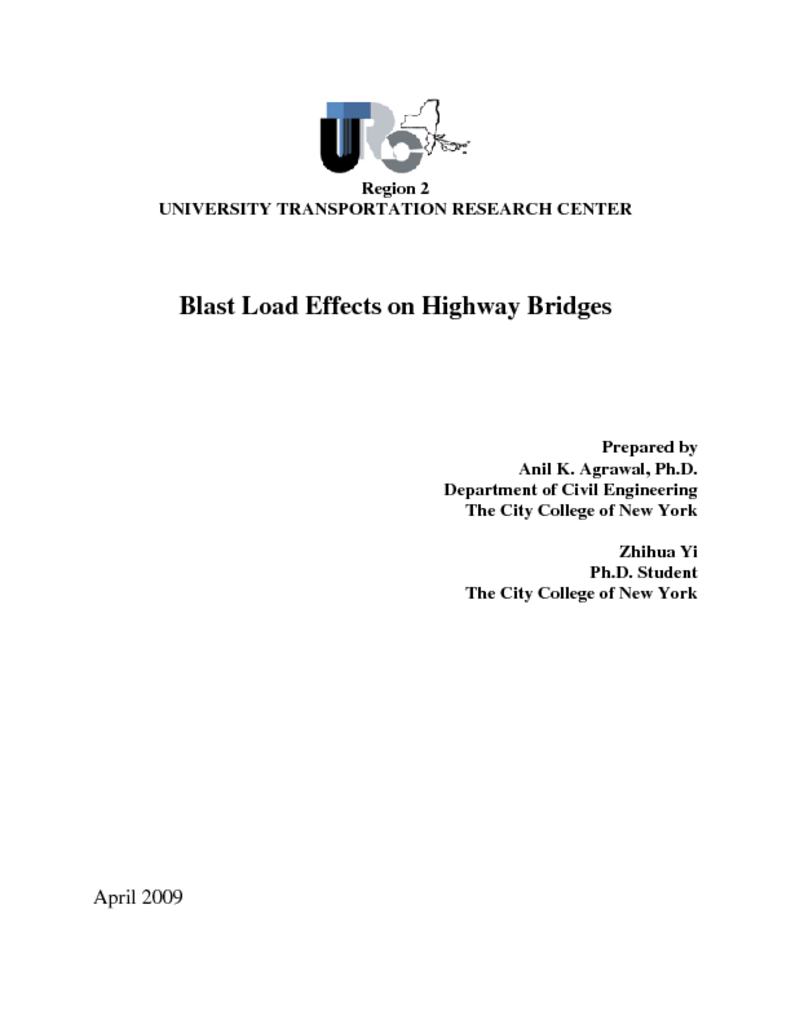There has been increased awareness about safety of highway bridges from intentional/unintentional blast loads. This report focuses on the investigation of behavior of various bridge components during blast loads through a high fidelity finite element model of a typical highway bridge. Computer programs, such as LS-DYNA offer detonation simulation capabilities to propagate blast loads through air medium. However, blast pressures generated by such programs are significantly different than those by ConWep, a computer program based on semi-empirical equations. In this report, we have presented a new approach to generate blast loads by ConWep and transmit it through air medium to structural components . In order to investigate effects of blast loads on bridge components, a very detailed finite element model of the bridge with approximately 1 million degrees of freedom has been developed. The bridge has been subjected to three levels of blast loads, designated as “Low”, “Medium” and “Large”. In order to investigate correlations between seismic detailing, concrete strength and blast load magnitude, the bridge model has been designed for three different seismic regions with concrete compressive strength varying from 3,000 to 10,000 psi. Based on simulation results, 14 damage mechanisms prominent during blast load effects on bridges have been identified and correlated with seismic damage mechanisms. Simulation results show that seismic capacities and blast load effects are strongly correlated. Better seismic capacity directly implies better blast load resistance. However, several damage mechanisms are not present during seismic loadings and protection of bridge components from failure because of these mechanisms needs to be considered by improved detailing of components and optimization for multi-hazard seismic blast designs. We have also presented a framework for the performance based multi-hazard blast-seismic design approach. Different performance levels for bridge components subject to blast loads have been defined. Considering bridges designed for different seismic capacities, performance matrices have been developed to demonstrate the limitation of seismic detailing in dealing with blast loads. These performance matrices can be fully developed by considering different performance levels during multi-hazard seismic-blast loads in future research.




